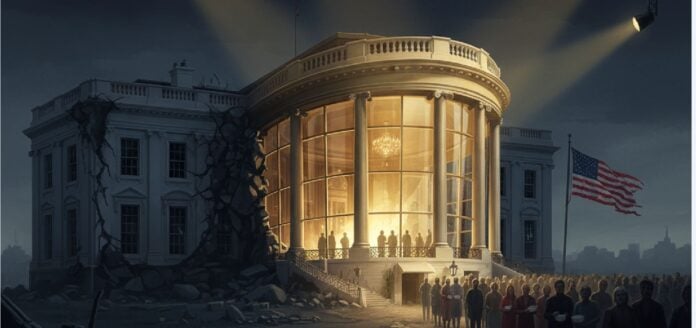By Kenneth Tiven
President Donald Trump’s second-term style of governance appears less like leadership and more like performance—a tactical fog meant to obscure voter outrage over soaring health costs, a suspended food programme that once fed 40 million Americans, the expulsion of female military officers, and most recently, the selective release of documents from the Jeffrey Epstein sex files.
Trump still insists he shoots “at or near par” during his weekend golf trips—an unlikely claim for a man nearing 80 who frequently dozes off during Oval Office meetings. What seems far truer is that he inhabits a self-created world, one sustained at vast taxpayer expense.
The seven-and-a-half-week shutdown may soon end after eight Senate Democrats joined Republicans to pass a partial funding bill. It marginally restores some insurance subsidies, but opposition in the House remains fierce. Meanwhile, Democratic victories in state and local elections have underscored a growing national fatigue with Trumpism.
HEALTH, HUNGER, AND THE PRICE OF POLITICS
Republicans continue to resist extending Affordable Care Act tax credits, even as private insurers warn of massive premium hikes. Trump’s own pollsters caution that ignoring health care could cost Republicans dearly in the 2026 mid-terms. MAGA loyalists may remain unmoved, but many 2024 swing voters are already disillusioned.
Democrats, too, face criticism for failing to hold the line in the Senate. Their inability to unite in opposition allowed Republicans to claim victory. Yet long-term trends favour Democrats: ballooning food and medical costs, Trump’s judicial setbacks, and the public’s growing frustration with the administration’s cruelty.
TRUMP’S ART OF THE SHAKE-DOWN
An objective look at Trump’s second-term behaviour reveals a familiar pattern: confrontation, chaos, and coercion. His formative years as a New York developer taught him the mob’s methods—pressure, delay, and deal-making through intimidation. Those lessons now underpin his governing philosophy.
Trump’s “demolish and replace” approach mirrors the ideological playbook of the Heritage Foundation’s Project 2025: a radical effort to dismantle the administrative state and remake government in his image. His campaign slogan: “Make America Great Again” has evolved into a creed of demolition—both institutional and moral.
Today, Trump uses regulatory leverage to threaten media companies, universities, and critics alike. Facing complex federal oversight, media conglomerates often choose quiet settlements over courtroom battles, enriching Trump’s war chest and reinforcing his dominance.
In one striking case, he threatened to sue the BBC for $100 billion over a documentary that accurately depicted his role in the January 6 insurrection. Under British law, he would likely lose and pay full court costs, but the gesture itself reflects his obsession with vengeance, not justice.
Trump’s spree of pre-emptive pardons—many to allies accused of election crimes—signals a deep corrosion of the rule of law. While federal clemency shields them from national prosecution, state charges remain. The message is unmistakable: loyalty buys immunity, and the Department of Justice exists to serve the president’s whims.
ECHOES OF AUTHORITARIANISM
From Mao Zedong’s command politics to Franklin D Roosevelt’s transformative New Deal, history offers contrasts Trump neither understands nor respects. Unlike Roosevelt, whose reforms empowered the voiceless, Trump channels an older, darker tradition—the belief that power belongs only to the wealthy and “real” Americans.
His second term marks the politicization of the US military. A compliant secretary of defence and purges of top officers have replaced professional command with sycophancy. The Constitution’s promise of due process is now treated as expendable.
Trump’s worldview is monarchic, not democratic. As he expands a $300 million “private” ballroom on White House grounds while cutting the SNAP food programme before Thanksgiving, the symbolism is staggering: opulence for the few, hunger for the many.
Roughly 30 percent of the families depending on SNAP are Trump voters—citizens now directly harmed by the leader they idolize. Meanwhile, federal workers remain unpaid, and travel disruptions cripple the economy. The cost is human, not partisan.
THE ELECTORAL PARADOX
America’s constitutional architecture amplifies minority power. Trump lost the popular vote, but captured the presidency through the Electoral College, a relic of 18th-century compromise that today skews political equity. Smaller states wield disproportionate influence, ensuring that the grievances of a shrinking demographic—older, rural, white, and fearful of social change—can still command national consequence.
Trump exploits that imbalance masterfully, turning resentment into power, policy into theatre, and democracy into a stage for his endless performance.
—The writer has worked in senior positions at The Washington Post, NBC, ABC and CNN and also consults for several Indian channels


